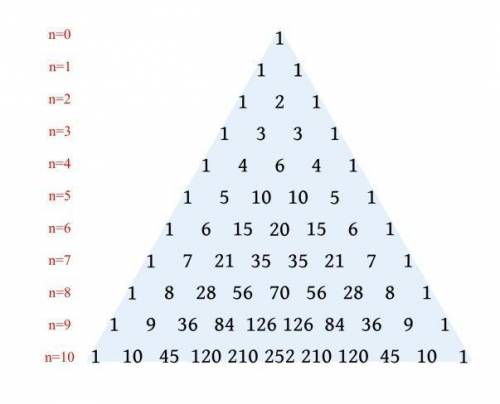 4
4 Find the 8th term of the expansion of the binomial (2x - y) 14 Find the third term of expansion of the binomial (x + 3y) 10 Back to the Sequences and Series Home Page. Back to the Intermediate Algebra (Math 154)
Step-by-step explanation:
 1
1 Correct choice is D
Step-by-step explanation:
The i-th term of the binomial expansion  is
is

If i=8, then

 7
7 d. 
Step-by-step explanation:
By the binomial theorem,

Where,

Thus,

For the 8th term, r = 7,
Thus, the 8th term would be,





Hence, option 'D' is correct.
 1
1 Correct choice is D
Step-by-step explanation:
The i-th term of the binomial expansion  is
is

If i=8, then

 7
7 d. 
Step-by-step explanation:
By the binomial theorem,

Where,

Thus,

For the 8th term, r = 7,
Thus, the 8th term would be,





Hence, option 'D' is correct.
 1
1  1
1  9
9 120x^3y^7
We can use the Pascal's triangle to solve this question.
This pascal's triangle is shown in the Image below. To build the triangle, begin with the number 1 at the top, then continue placing numbers below it in a triangular pattern. In this way, each number are the numbers directly above added together. So, the expression is :
(x+y)10
After you do the steps you be left with:
120x^3y^7


It will provide an instant answer!
